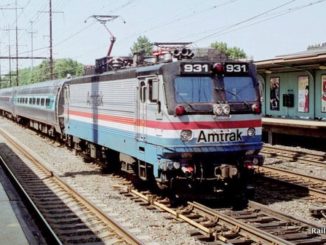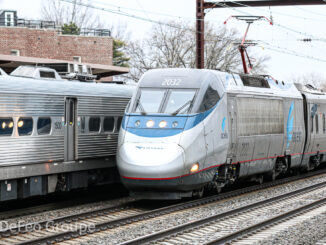NEW YORK – Amtrak is making major investments in the New York area to bring its bridges, tracks and other infrastructure up to a state of good repair, increase track speeds and improve operations, including a soon to start $10 million project to rehabilitate the Pelham Bay Bridge located along the Northeast Corridor.
“Amtrak is committed to maintaining and improving our infrastructure in New York to ensure the safety of passengers and support efficient train operations,” said Amtrak President and CEO Joseph Boardman, noting a specific focus on the heavily traveled Northeast Corridor between New York and Boston and on the Empire Line between New York and Albany.
Boardman said Amtrak has spent hundreds of millions of dollars in New York in recent years on numerous infrastructure projects that are often worked on without much fanfare and are hidden in plain sight, but nonetheless result in a safer and improved railroad for passengers.
The most recent major investment by Amtrak is the $10 million rehabilitation of the more than 100-year old Pelham Bay Bridge in the Bronx. Scheduled to begin by the end of November 2009, the project is designed to strengthen and repair the piers, piles, abutments and foundations that support the tracks, the transmission lines, and the catenary wires above the tracks that feed electricity directly to the trains.
The improvements, funded by the American Recovery and Reinvestment Act (ARRA), will make the Pelham Bay Bridge more reliable and reduce maintenance on the structure that carries 43 passenger trains and two freight trains each weekday, and opens about 10 times per day to marine traffic. The work is to be completed by October 2010.
An ongoing major project is the $72 million effort to upgrade the catenary wires on the Amtrak Hell Gate Line, the 20-mile stretch of tracks from New Rochelle to New York Penn Station. The project began in 2006, is designed to modernize and replace electrical equipment that dates as far back as 1914 and will provide more reliability, fewer power disruptions and faster repairs to keep trains on the move. It is funded by the Amtrak general capital program.
In October 2009 Amtrak completed a $6 million rock stabilization project near the George Washington Bridge located along the Empire Line to prevent rocks from falling on the tracks resulting in the increase of track speed from 15 mph to 50 mph. The slopes were stabilized by removing 407 tons of loose rock and vegetation, applying fiberglass-reinforced concrete, attaching more than 1,000 bolts, and installing nearly 90,000 square feet of wire mesh retaining walls. The project was funded by Amtrak’s general capital program.
Additionally, in October 2008, the joint Amtrak-Metro North Railroad $110 million Shell-At-Grade Interlocking project in New Rochelle was completed. Amtrak provided $99 million from its general capital program for the project begun in 2004 to increase capacity and improve reliability by removing and repositioning track switches, making new track alignments, installing new rails and crossties, and improving the catenary wires and the communications and signal systems. As a result, track speed increased from 15 mph to 45 mph, the number of tracks with platform access at the New Rochelle station increased from two to three and the North Avenue Bridge that crosses the tracks near the New Rochelle station was rebuilt.
Amtrak is undertaking many other projects to maintain and improve its New York area infrastructure, including spending $7.5 million from its FY 2010 general capital program to repair six additional bridges on the Empire Line and $5 million from ARRA funds for painting and maintenance of the Bronx Kill Bridge on the Northeast Corridor.




